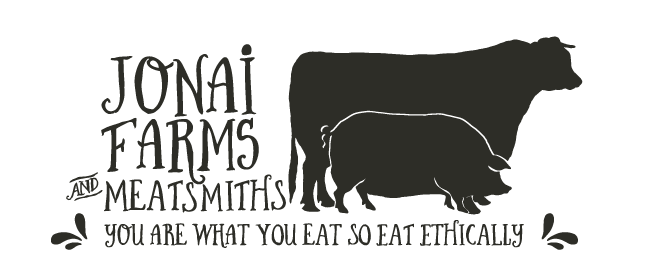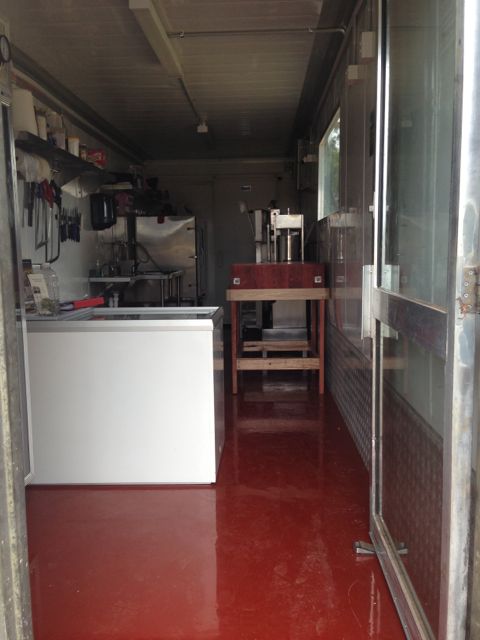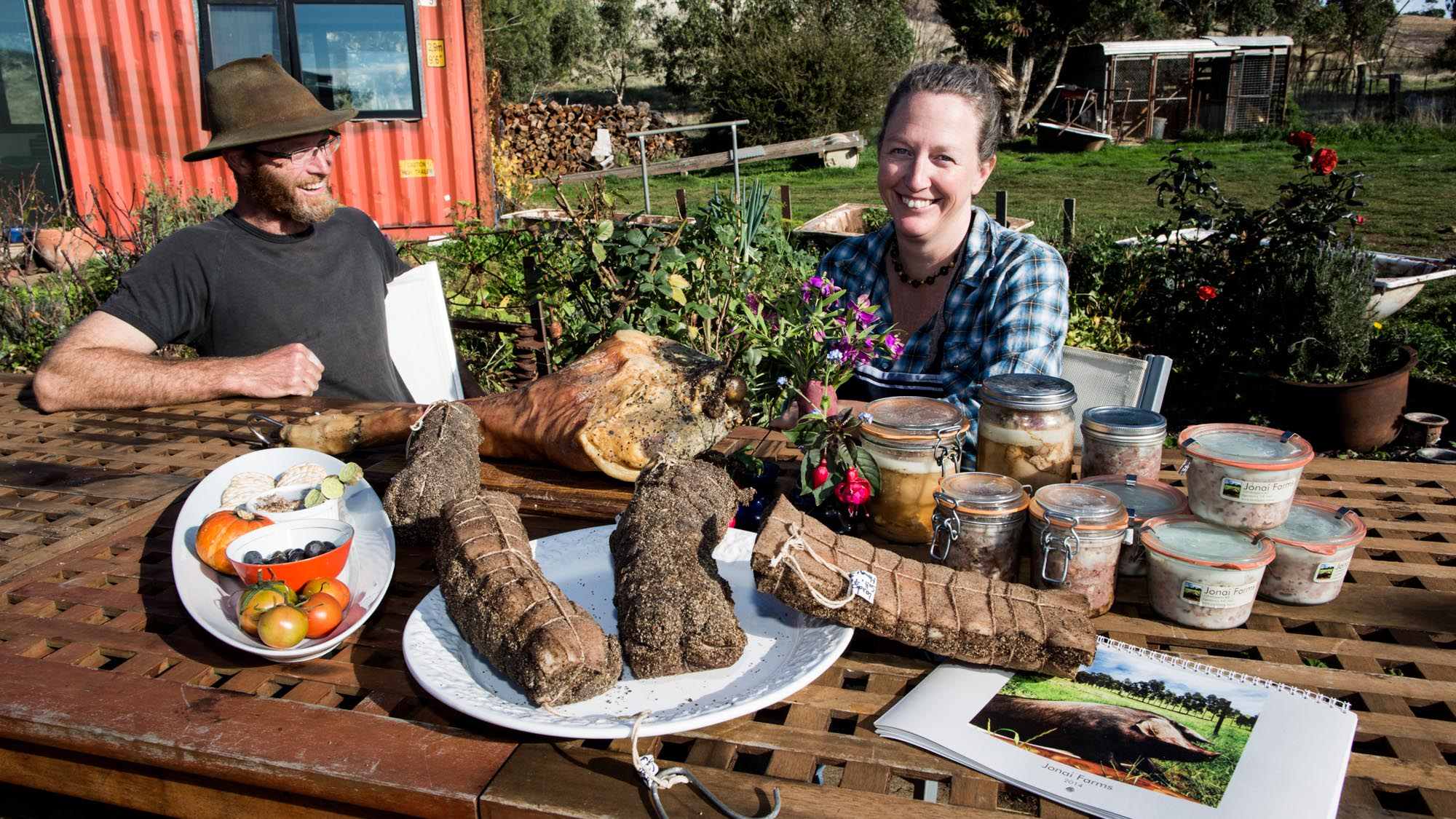As I’ve already detailed here on The Hedonist Life, last year we crowdfunded and built our own butcher’s shop here on the farm. Once again, can I just thank the wonderful community of ethical omnivores (& vegetarians!) who supported our efforts, and who have been duly rewarded with uncommonly delicious pork & Jonai Farms calendars. ☺
In the interest of supporting Australia’s fair food movement and the other small livestock farmers who would like to move to on-farm processing, it’s time we gave you some more details about our budget and actuals on the project, and on how we went with our local council and the state regulator PrimeSafe.
Rationale & Profitability Before I give you the nitty gritty I’d love to share the rationale and real financial benefit to our farm.
Based on the final four months of having our meat butchered (Sept-Dec) and the first four of doing our own butchering on farm (Jan-Apr), our butchering direct costs went from 43% to 30% of total direct costs. More dramatically, it went from 22% to 11% of our total costs (including overheads).
While running a coolroom & other associated infrastructure took our energy costs up some, it was in truth only a 3% increase (from 2-5%) in overheads, or a 2% (from 1-3%) in total costs.
This change in costs came at the time we increased our supply from 5-7 pigs per month to 8-12 pigs per month (which would have increased our butchering costs a great deal), and introduced our CSA model (we now have 28 members!).
We went immediately from making a loss on the farm (subsidised by my off-farm income, which I gave up in December with some trepidation…) to turning a profit. Huzzah!
Now onto the details of building the boning room…
Construction In my earlier post on the meatsmith, I recounted the process we went through to build it from a 40-foot refrigerated container, so have a look at that for timelines, materials and construction challenges.
Council We were initially informed we would need a planning permit, but due to changes to the planning scheme in Victoria 1 September 2014, that proved not to be the case for us. The new scheme allows for primary produce sales & rural industry without permits. Clearly if you have overlays on your property they could trigger the need for a planning permit, so you'd need to check those.
So that just left us with PrimeSafe.
Regulation We were really uncertain about how we’d go with our regulator as we’d heard stories that they could be difficult to deal with. Also, many said we were crazy and they’d never approve a butcher’s shop on a farm. As there are other butcher’s shops on farms, that’s clearly not true… and now we’re here as another example!
Understanding the Victorian Standard for Hygienic Production of Meat at Retail Premises is slightly daunting when you’ve come from outside the industry, and working out how to operationalize standards is tricky without advice. Now that I’m a butcher I have to say they make perfect sense…
I won’t go into great detail here though except to say that the Standards are for the most part quite reasonable and relatively common sense (eg non-porous materials for benches & floors for obvious reasons of hygiene). I will also note that there is an entire sub-clause for wooden butcher’s blocks under section 4.1.3:
(d) wooden chopping blocks (“Butchers Blocks”) shall be free of splits, cracks and holes; and shall be maintained in a hygienic condition;
That is, wooden blocks are legal, and simply must be kept in good condition.
If you want more insight into how to build something legal, we found it very worthwhile to join the Australian Meat Industry Council (AMIC). They not only have been great at providing advice and making visits to check out our facility before the inspectors came, your membership fee pays your year’s audit fees, so is a great value proposition.
Butchering qualifications There is no legal requirement to have a certificate to be a butcher. But there is very good reason to ensure you are trained by one! Butchering is hard, skilled work, and should be approached seriously as such. I apprenticed informally with our butcher for six months, butchering between two and four pigs per fortnight over that period. It was invaluable, and I’d strongly recommend you do similarly if you can find someone as accommodating as Sal was.
Budget & Actuals I’ll finish with our budget, target and actuals. As with most things at Jonai Farms & Meatsmiths, we buy secondhand materials as often as possible. Virtually everything in the butcher’s shop is secondhand (excepting the bandsaw, MGO & expoxy flooring, and my beautiful red gum butcher’s block made by our mate Turk). So while we budgeted for possibly having to pay the price of new equipment, we typically found secondhand due to Stuart’s excellent commitment to spend time trawling the internet & back laneways for others’ disused or discarded items. That’s why the ‘target’ column is lower than the ‘budget’.
Note that the actuals column includes items we hadn’t foreseen, and yet we still came in under budget (*high fives to Stuart*).
Note that if Stuart had not done all the labour himself, you need to factor in another $10k or so for a month of contract labour. Happy to take feedback on whether we’ve got that right or not.
The work and cost involved in taking control of our supply chain has had enormous benefits to us, which we sum up as an ‘ethically viable no-growth model’.
Most importantly, we can provide total transparency to our customers (e.g. there’s really no gluten in any of our sausages, just meat, fat, salt, pepper, spices & herbs from the garden!), and can respond flexibly to their orders just like a regular butcher’s shop, instead of being locked into particular sized cuts, number of chops per package, etc.
We also have control of the reliability of our butchering – only we can let ourselves down if we can’t cut for some reason. This is an enormous relief as most small producers will attest.
We don’t need to grow our herd to make ends meet – we’re fully viable at a size that respects what Salatin calls the ‘ecological umbilical’. We have no need (let alone desire, but who does?) to tax our land beyond its capacity.
We hope this information is all useful to lots of other passionate fair food farmers out there! We take Joel Salatin’s advice to ‘hold your innovations lightly’ very seriously, and intend to keep sharing what works (and what doesn’t!).
Viva la revolucion!
* * *
If you’re keen for more information, we now offer producers’ workshops on our ethically viable no-growth model, which we’re keeping intentionally affordable as we are here to help grow this movement, not just our own wallets. The next one is on 16 August 2014 and right now has plenty of room, but the last one filled up so don’t leave it too late to book.
* * *
Our next step in taking control of that chain and making more delicious things for our wonderful community is to build a curing room and commercial kitchen, where we’ll be able to cure salami, prosciutto, coppa, and pancetta, and cook a range of charcuterie such as rillettes, pate de tete, and other things that make the most of the rich potential of the pig.
You can check out our latest crowdfunding campaign to do just that over on Pozible, where we’re asking people to let us feed you instead of the banks!





